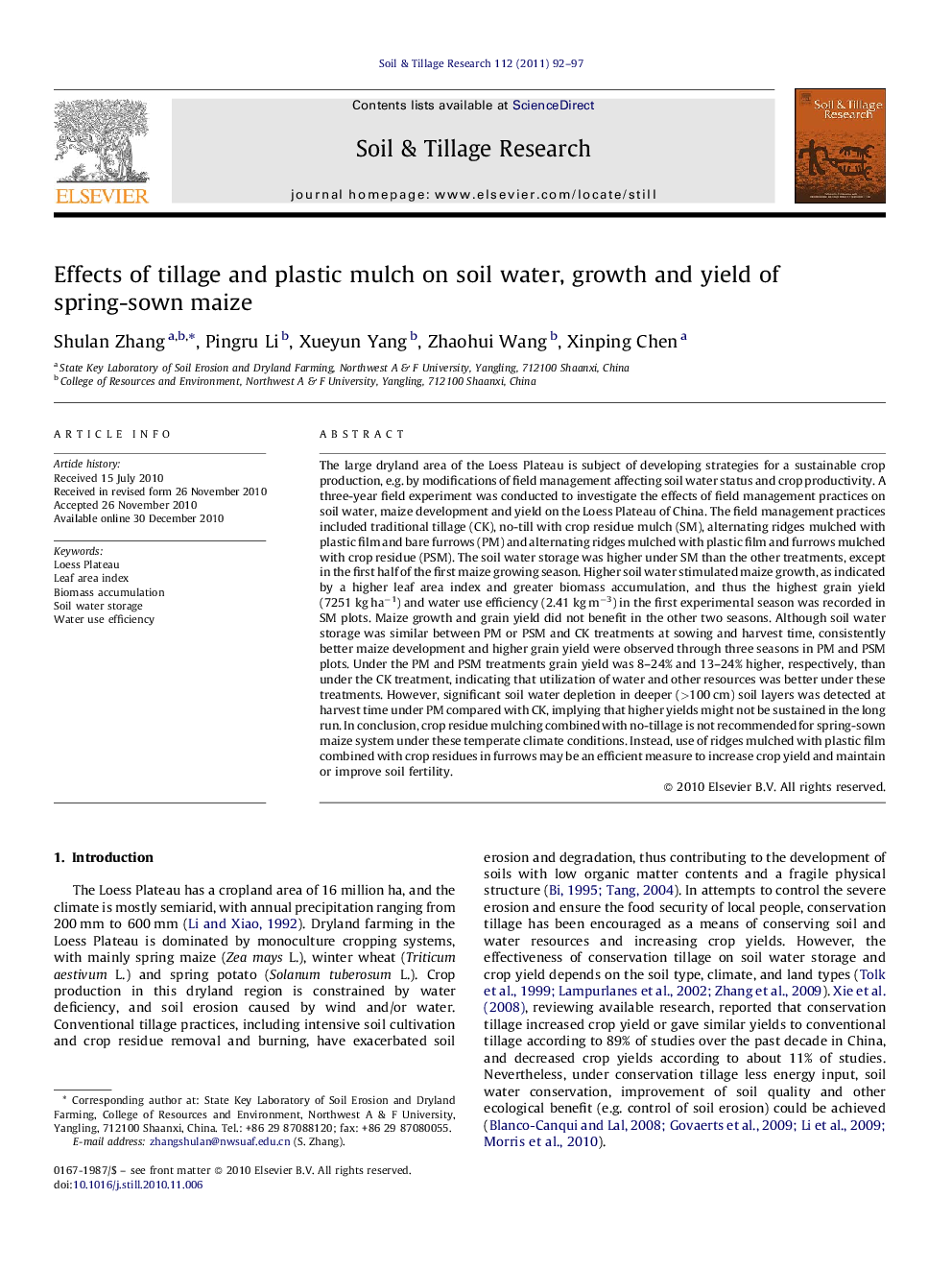| کد مقاله | کد نشریه | سال انتشار | مقاله انگلیسی | نسخه تمام متن |
|---|---|---|---|---|
| 306171 | 513079 | 2011 | 6 صفحه PDF | دانلود رایگان |

The large dryland area of the Loess Plateau is subject of developing strategies for a sustainable crop production, e.g. by modifications of field management affecting soil water status and crop productivity. A three-year field experiment was conducted to investigate the effects of field management practices on soil water, maize development and yield on the Loess Plateau of China. The field management practices included traditional tillage (CK), no-till with crop residue mulch (SM), alternating ridges mulched with plastic film and bare furrows (PM) and alternating ridges mulched with plastic film and furrows mulched with crop residue (PSM). The soil water storage was higher under SM than the other treatments, except in the first half of the first maize growing season. Higher soil water stimulated maize growth, as indicated by a higher leaf area index and greater biomass accumulation, and thus the highest grain yield (7251 kg ha−1) and water use efficiency (2.41 kg m−3) in the first experimental season was recorded in SM plots. Maize growth and grain yield did not benefit in the other two seasons. Although soil water storage was similar between PM or PSM and CK treatments at sowing and harvest time, consistently better maize development and higher grain yield were observed through three seasons in PM and PSM plots. Under the PM and PSM treatments grain yield was 8–24% and 13–24% higher, respectively, than under the CK treatment, indicating that utilization of water and other resources was better under these treatments. However, significant soil water depletion in deeper (>100 cm) soil layers was detected at harvest time under PM compared with CK, implying that higher yields might not be sustained in the long run. In conclusion, crop residue mulching combined with no-tillage is not recommended for spring-sown maize system under these temperate climate conditions. Instead, use of ridges mulched with plastic film combined with crop residues in furrows may be an efficient measure to increase crop yield and maintain or improve soil fertility.
▶ No-tillage combined with crop residue mulching was not recommended for spring maize cultivation in the study area. ▶ Ridges covered by plastic film combined with bare furrow may not sustain maize productivity in the long run. ▶ Ridges covered by plastic film combined with furrow mulched by crop residue could be a suitable measure for sustaining maize productivity and maintaining soil fertility.
Journal: Soil and Tillage Research - Volume 112, Issue 1, March 2011, Pages 92–97